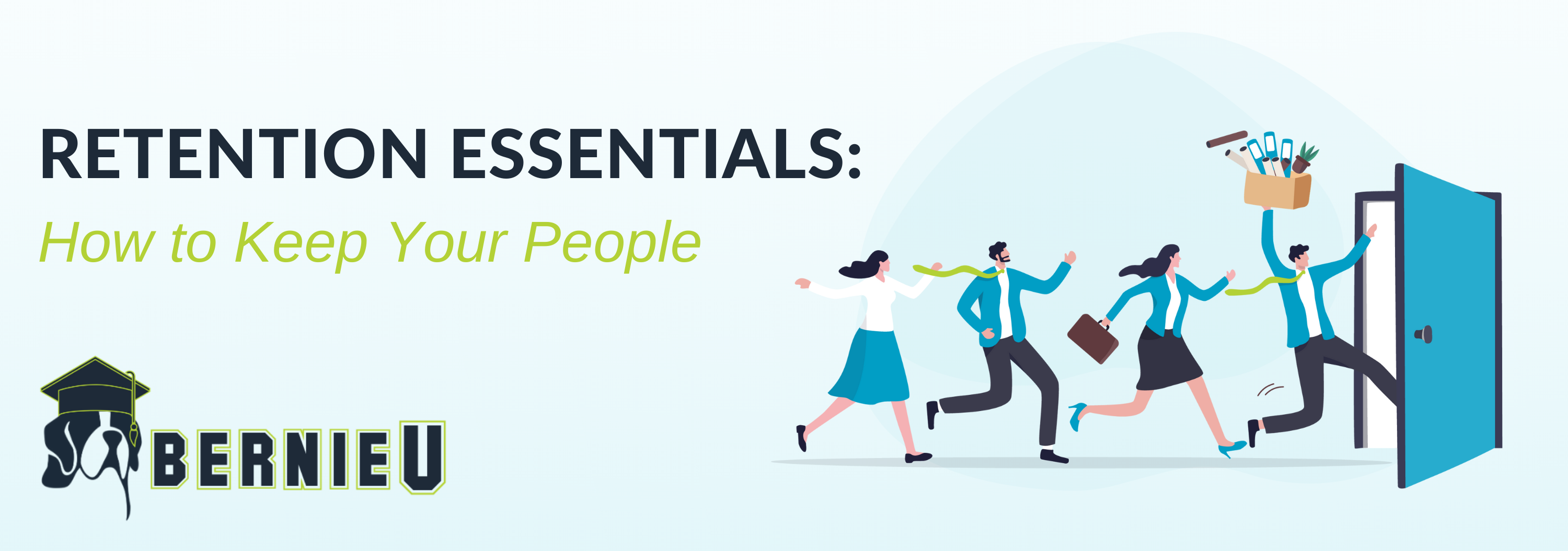Written by
Will Miranne
Will is an aPHR-certified writer on the marketing team at BerniePortal. He writes about healthcare, human resources, and benefits.
Is Gamification an Effective Employee Motivator?

Gamification has become one of the more popular methods of enhancing the employee experience within the modern workplace. It has been marketed as a system to increase employee engagement and productivity while also boosting employee satisfaction. But what exactly is gamification? And what impact can it have on your organization? Continue reading to learn all of the details.
What Is Gamification?
When games and rewarding activities are embedded into non-gaming environments such as businesses or online learning it can be referred to as gamification. The fundamental aim of gamification is to incorporate competition, checkpoints, and other gaming concepts into businesses as motivation to engage employees and boost participation.
While the term gamification was first coined in 2002 by Nick Pelling, the concept itself existed well before our current business environment. For example, if you were a boy scout in the early 1900s you would receive a badge for accomplishing specific tasks. The idea of badges and ranks was instilled as motivation for scouts to seek more remarkable accomplishments. As you can see, Gamification is not a modern idea. It is an old idea that is being modernized. But evidence of gamification's existence dates even farther back than this.
One example includes ancient Rome, which promised prisoners their freedom should they become a gladiator and win a battle within the Colosseum. Using game tactics and concepts to motivate the Roman people is a clear example of gamification.
Now, employers are looking at this age-old concept in a new light. But does the addition of specific gamification strategies within the workplace make a tangible difference?
Is Gamification Effective?
In 2019, TalentLMS completed a survey on gamification in the workplace. They asked nearly 900 employees about the gamification elements within their organization. The study results indicate that incorporating these concepts and ideologies into your organization can make a tangible difference. One of the most exciting results TalentLMS discovered was that 89% of employees who experienced gamification in the workplace claimed they were more productive, and 88% said they were happier.
Employees want gamification because it allows for a greater working experience from start to finish. 33% of surveyed employees claimed they desired more gamification features within their place of work, and 83% of employees who engaged in gamified training felt greater motivation while at work. Not only do employees have positive experiences with gamified training, but 61% of employees who engaged in non-gamified activities felt less productive and even bored.
Gamification has the potential to take unhappy, unproductive, and unengaged workers and turn them into excited, motivated, and efficient employees who are happy to come to work. 89% of employees believed that they would be more effective at work if they could engage in more gamification.
How Can Gamification Impact Your Organization?
Implementing gamification policies in your organization is crucial to boost your employee engagement and even improve overall retention rates. Gamification creates an opportunity for employees to receive positive feedback for achieving results. Much like boy scout badges, employees will receive rewards for their milestones and accomplishments.
Gamification can also help employees break down complex projects into smaller, more achievable tasks. Taking a project one step at a time allows employees to track actual progress and stay on task more effectively. Gamification creates a workspace where even mundane tasks have the potential to be exciting.
If you allow it, gamification can positively affect your organization. Look at ways your organization could benefit from simple gamification elements and create an actionable plan. But before you look to integrate these plans, determine which gamification method will work best.
What Are the Different Types of Gamification?
Gamification can be established in many different ways and involve numerous processes. So long as the concept remains the same, organizations are free to get as creative as possible.
Though there are no set guidelines, there are two common approaches to gamification that most organizations can find helpful:
-
The first is structural gamification. Structural gamification involves taking already present systems or processes and adding in gamification elements after the fact. An example would be taking existing training materials and adding checkpoint elements and quizzes that reward employees upon completion. Goals, milestones, and checkpoints for new information can all be common elements of structural gamification.
-
The second is content gamification, which looks to transform existing content into more interactive or engaging material. This gamification often looks like taking tasks and turning them into a game. One example would be employees who can track daily tasks on an app and compare their scores with fellow employees. Exciting content, fast-paced games, stories, and strategy can all be seen as elements of content gamification.
Organizations need to recognize how gamification can appear in the modern workplace. Looking at what is already present among other businesses, they can begin to find creative ways of integrating gamification within their own organization.
How Can you Incorporate Gamification Into Your Organization?
The first step to adding gamification elements into your organization is finding areas where employee engagement is needed. You can use simple or complex systems for this so long as it entices employees to engage with the elements.
Recognition should be clear and present. Be sure to break down tasks into smaller parts so that employees can feed off of little accomplishments and work more diligently toward the larger goal. There is no single solution that works best, but the way it is incorporated can make or break the process. If it takes too long for an employee to gain recognition, or if problems are too complex right away, employees may not engage very quickly, and the system could fall apart.
You can also use gamification to recognize new hires. Provide rewards for employees who complete new-hire training, paperwork, and reading materials. For current employees, you can focus on milestones, use leaderboards, and even set up systems for goal-tracking. It is most important to remember to be open to new ideas and focus on elements that work specifically within your organization.
Keep in mind that the goal of gamification is for employees to feel like they are productive and winning at their job. Be sure you set up clear rules and communication so that all employees understand the process and can reach out should they have any questions or concerns.
Additional Resources
You can also stay informed, educated, and up-to-date with gamification and other important topics by using BerniePortal’s comprehensive resources:
-
BerniePortal Blog—a one-stop-shop for HR industry news
-
HR Glossary—featuring the most common HR terms, acronyms, and compliance
-
HR Guides—essential pillars, covering an extensive list of comprehensive HR topics
-
BernieU—free online HR courses, approved for SHRM and HRCI recertification credit
-
HR Party of One—our popular YouTube series and podcast, covering emerging HR trends and enduring HR topics
Written by
Will Miranne
Will is an aPHR-certified writer on the marketing team at BerniePortal. He writes about healthcare, human resources, and benefits.
Related Posts
Recent years saw a rapid increase in workplace perk offerings. The goal was to entice...
Levels documents play an important role in organizations' pay transparency efforts. They...
Skip-level meetings are a nontraditional way for organizations to garner additional...
An HRIS can revolutionize your HR position, but what is an HRIS? A human resources...





.jpg)

Submit a Comment